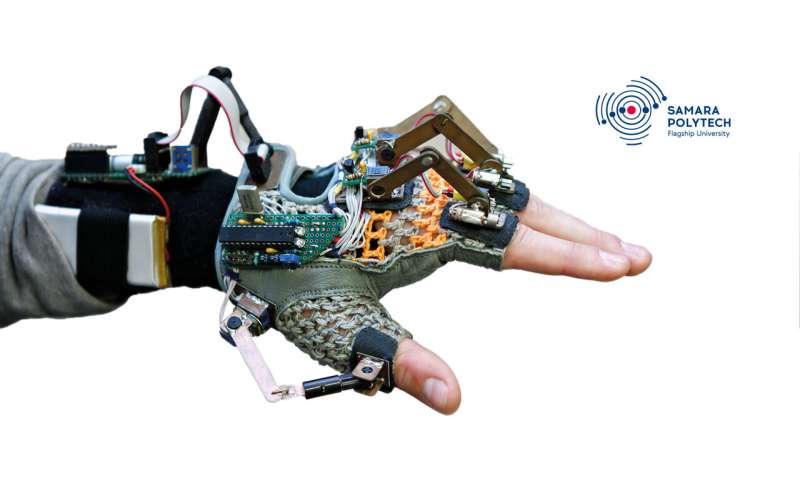A young scientist of Samara Polytech invented a glove for the deaf

A unique invention will help people with profound hearing loss to get a better spatial
awareness.
A master student of Samara Polytech has designed an apparatus for people with
profound hearing loss, that is a vibrating glove. The device translates auditory information into
tactile sensations.
Today, the lost hearing can be restored only with the help of a surgical operation to install
special implants. However, this method is not always effective. Artem Brazhnikov, a master
student of the Faculty of Mechanical Engineering, Metallurgy and Transport of Samara Polytech
suggests to solve the problem with the help of a vibrating glove designed by him. Most recently,
a young scientist received a patent for his invention ( www1.fips.ru/registers-doc-
view/fips_servlet ).
Initially, Artem designed a joystick glove with which you can play computer games with one
hand. Then the young man improved the device and turned it into an unusual hearing aid. To
make the joystick glove the vibro-glove, the engineer removed the finger position sensors,
provided the glove with tactile feedback modules (vibration motors), and converted the
electronic control unit from a game controller into an audio signal spectrum analyzer.
"When a person loses his hearing, his other senses become more acute. The sensory
substitution occurs: the brain compensates the lack of information from one sense organ at the
expense of others", says Artem. "A vibrating glove is a retranslator that converts sounds into
tactile sensations".
A glove microphone amplifies the audio signal and transmits it to a spectrum analyzer that splits
the audio range into separate frequency bands. Each tactile module corresponds to one sound
strip. The strength of a tactile stimulation is proportional to the amplitude of sound vibrations in
the corresponding frequency band. This process is somewhat similar to playing a keyboard
musical instrument.
"For example, a piano has many keys, pressing which (tactile stimulation) generates a certain
note, that is, a sound vibration of a certain frequency", Artem explains. "Now imagine that there
is an instrument that performs the opposite operation, that is, catches notes (sound vibrations)
and converts them into keystrokes (tactile stimulation). A person playing such an instrument
does not hear the sounds it makes, but feels how the piano itself presses the keys. So a
vibrating glove is a piano, but only working vice versa".
More information:
Samara State Technical University (SSTU, Samara Polytech) as a flagship university offers a
wide range of education and research programs and aims at development and transfer of high-
quality and practically-oriented knowledge. The university has an established reputation in
technical developments and focuses on quality education, scientific and pragmatic research,
combining theory and practice in the leading regional businesses and enterprises. Education is
conducted in 30 integrated groups of specialties and areas of training (about 200 degree
programs including bachelor, master programs and 55 PhD programs) such as oil and gas,
chemistry and petrochemistry, mechanics and energy, transportation, food production, defense,
IT, mechanical and automotive engineering, engineering systems administration and
automation, material science and metallurgy, biotechnology, industrial ecology, architecture,
civil engineering and design, etc.
Provided by Samara State Technical University